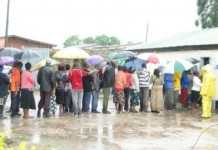A PILL a day, an injection every three months, a simple device or even an implant that last five years are the options available to manage fertility in women but are we ready to extend these services to young teens?
The act of bearing children has been gifted to the female of the human species and in light of advances in science, women have various options in deciding the size of their family.
Much has been said about the effects of early pregnancy on the levels of literacy, nutrition, social well-being and general health. Many first-time mothers in rural and urban Zambia are unprepared for the child they are expecting and in rural areas the trauma has long-lasting effects that has led to a generally-high maternal mortality rate.
One obvious solution to making motherhood safer and improving the living standards of the vulnerable groups is to promote the use of family planning methods.
And to be more effective, we have to target young people to avoid constantly fire fighting. If more young girls and boys are educated and have access to sexual reproductive health services (SRHS), then we can be assured of reduced deaths from unsafe abortions and AIDS-related diseases. We would also see better school attendance and completion rates as young people could focus better on education as opposed to maintaining a family.
Last month, Vice-President Inonge Wina called for the involvement of adolescents in all programmes and activities aimed at promoting sexual and reproductive health among young people.
Speaking when she officiated at the Zambia Adolescent Activism Awards in Health, Mrs Wina said the participation of young people in SRHS in Zambia resulted in girls having the legitimacy to talk about sex without the risk of being stigmatised as sexually promiscuous among other benefits.
Unintended pregnancy is a serious and growing issue. Of the 208 million pregnancies that occur worldwide each year, more than 41 percent are unplanned, and of these, nearly half end in abortion.
According to the United Nations Population Fund (UNFPA), although the vast majority of teenagers are sexually-active, only a small percentage of them use family planning methods.
Often, they do not learn about contraception until after their first unplanned pregnancy, when it’s already too late. As a result, HIV prevalence is rising and around 80 percent of unsafe abortions occur among women under 19 years old.
Pregnancy-related deaths are the leading cause of mortality for young women, whose bodies are often not physically ready for childbirth, with up to 16 million girls aged 15 to 19 giving birth every year in low and middle income countries.
Sexually-transmitted infections (STIs) also disproportionately affect young people, with 15 to 24-year-olds around the world making up a quarter of the sexually-active population but two thirds of all newly acquired STIs.
And former Scaling Up Family Planning (SUFP) Community and Adolescent Social Outreach team leader Bernard Kawimbe says he is hopeful that the interventions by Government and other like-minded organisations would lead to a change in attitude towards sex education and access to SRHS for young people.
“Health services, such as family planning can be free, but that does not make them accessible.”
He says adolescents face several barriers because most health personnel are not trained in dealing with this age group and SRHS are practically inaccessible in the limited health centres across the country.
Mr Kawimbe noted that in the rural areas where the challenge of early pregnancies and maternal mortality are a daily reality the situation is even more urgent and requires more community involvement.
“There are many myths and misconceptions around family planning in rural areas, ” he said, “but if we can get more traditional leaders to buy-in to the idea and are equipped with information then needless deaths can be avoided.”
He noted that youth-friendly corners at health centres are not adequate to meet the needs of adolescents. Question arise such as should parents be escorting their children or should it be an anonymous service?
In spite of the proposed addition of sex education in school curricula, many community leaders and parents are still resistant at the concept of introducing condoms in schools and even worse many parents shun having “the talk” with their children.
In the past, this task was left to aunties, uncles and grandparents but the changing social spectrum now means that many young people are clueless about sex and the free options available to them.
UNFPA resident co-ordinator Mary Otieno said adolescents need to understand their right in order for them to demand the provision of services such as quality education and health.
According to the Zambia Demographic and Health Survey of 2007 (ZDHS 2007), girls have earlier sex debuts than the boys and they are less likely to use condoms.
Young males (15 – 19years) are more (94 percent) likely to engage in higher risk sex than the girls (48 percent).
Dr Otieno says Government and other partners should take up the burden of providing information to young people to protect them from early pregnancies and other sexual related risks.
It may sound simplistic but family planning will result in healthier and better educated parents and healthier children for a more prosperous society.
In Zambia, much is said about the elimination of child marriages and early pregnancies and this could easily be remedied by adopting more aggressive adolescent SRHS outreach.
The evidence of sex amongst school pupils is undeniable and it has been proven in that availing young people with information on sexuality reduces incidences of risky sexual behaviour, so can we please work towards helping our youth.
For comments: [email protected]
zambiadailymail

 JOIN DRIVERN TAXI AS PARTNER DRIVER TODAY!
JOIN DRIVERN TAXI AS PARTNER DRIVER TODAY!











